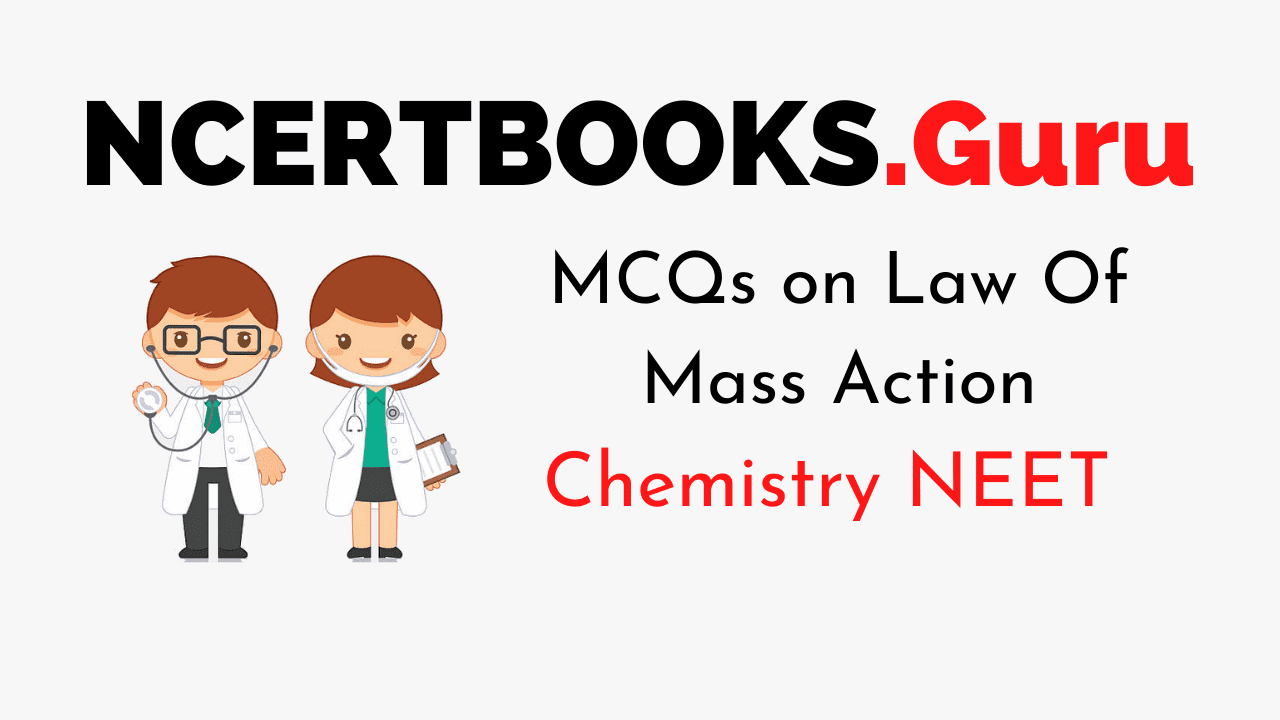NEET Chemistry is the scoring paper in the medical entrance examination. Here, you will discover the NEET Chemistry MCQ Questions for all Concepts as per the latest syllabus. Practice more on a regular basis with these NEET Chemistry objective questions on air pollution and improve your subject knowledge & problem-solving skills along with time management. NEET Chemistry Law Of Mass Action Multiple Choice Questions make you feel confident in answering the question in the exam & increases your scores to high.
MCQs on Law Of Mass Action
1. Which of the following is not correct?
(a) the rate law is an experimental fact, but the law of mass action is theoretical
(b) the rate law is always different from the expression of the law of mass action
(c) the rate law is more informative than the law of mass action for the development of a mechanism
(d) the order of a reaction is equal to the sum of the powers of the concentration terms in the rate law.
Answer
Answer: (b)
2. The temperature coefficient of a reaction is 2. How many times the rate of reaction increases when the temperature is increased from 30oC to 60oC.
(a) 4 times
(b) 6 times
(c) 8 times
(d) 16 times
Answer
Answer: (c)
3. If a reaction with t1/2 = 69.3 sec, has a rate constant 10-2 per sec the order is
(a) zero
(b) 1
(c) 2
(d) 3
Answer
Answer: (b)
4. K for a zero-order reaction is 2 x 10-2 mole/L/sec. If the concentration of reactant after 25 sec is 0.5M, the initial concentration must have been
(a) 0.5M
(b) 1.25M
(c) 12.5M
(d) 1.0M
Answer
Answer: (d)
5. A first-order reaction is 75% complete after 32 minutes. When was 50% of the reaction completed?
(a) 16min
(b) 8min
(c) 4min
(d) 32min
Answer
Answer: (a)
6. What is the half-life of a radioactive substance if 87.5% of any given amount of the substance disintegrate in 40 minutes?
(a) 160 min
(b) 10 min
(c) 20 min
(d) 13 min 20 sec
Answer
Answer: (d)
7. Half-life of 10g of radioactive substance is 10 days. The half-life of 20 g is
(a) 10 days
(b) 5 days
(c) 20 days
(d) 40 days
Answer
Answer: (a)
8. The chemical reactions in which reactants need a high amount of activation energy are generally
(a) fast
(b) slow
(c) very fast
(d) instantaneous
Answer
Answer: (b)
9. For a reaction A → Products the rate of reaction doubles when the concentration of A is increased by 4 times. The order of the reaction is
(a) 4
(b) 0
(c) 1/2
(d) 1
Answer
Answer: (c)
10. The number of atoms or molecules whose concentration alters during a chemical change is its
(a) molecularity
(b) order of reaction
(c) change in reaction
(d) none
Answer
Answer: (b)
